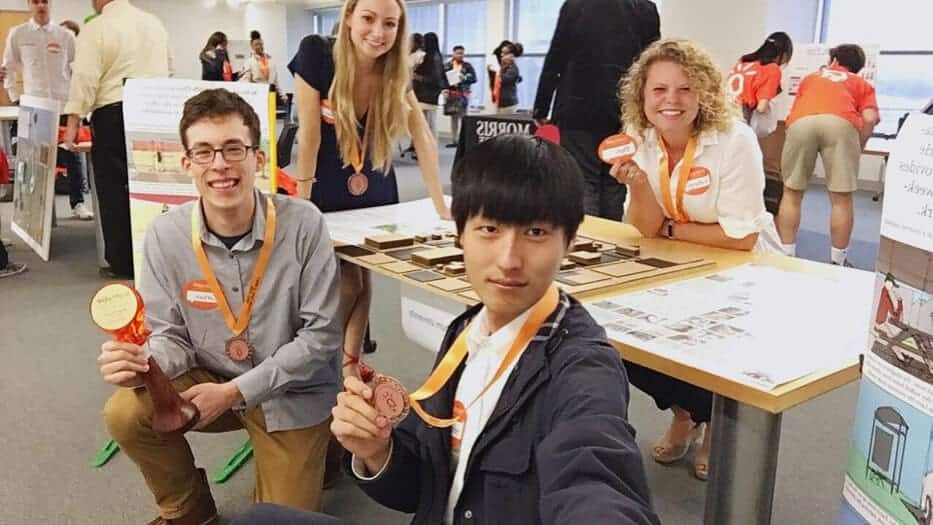Auburn Industrial Design Students win Bright Spark Design Competition

The future of transportation design is walking. A team of Auburn industrial design students presented that seemingly simple conclusion at the 2017-2018 Bright Spark Design Competition in Chattanooga, TN and won Best Overall Design (college level).
The competition, sponsored by Bridge Innovate, a design consulting firm, tasked students to answer the question: “How might we reimagine the transportation system of the future to move people and products more efficiently while protecting our natural resources?” The Auburn team, consisting of four students and one industrial design professor, worked six months to address this design challenge. They were among 20 teams of more than 150 students from 17 different schools across the Southeast, New York, and Ohio who participated in this competition to create the “Transportation of the Future.”
In October 2017, Ben Bush, assistant professor of industrial design in the College of Architecture, Design and Construction, assembled Auburn’s team of forward-thinking students. Senior Corban Leach, juniors Sarah Pugh and Katy Duncan and graduate student Hefei Han worked Tuesday and Thursday nights to come with a transformative solution that challenges the way we travel. Taking inspiration from college campuses, the team redefined city centers as diversely mobile, integrated, and sensory-engaging spaces.
As Bush explains, the student team wanted transportation to be not only efficient but also desirable. “Current methods are typically thought of as the moving of people and goods from point A to point B. Our goal was to focus on developing culturally diverse landscapes, in and through which humans thrive, and that gradually make walking not only necessary, but multi-sensory, safe, invigorating, and comfortable for the widest spectrum of citizens in an area.”
The Auburn team’s walkable city design is reinforced by a robust biking infrastructure and an efficient mass transit system. This three-tiered approach lowers traffic and commute times, reduces suburban sprawl and strengthens neighborhoods. Positive side effects are increased exercise and health, a heightened focus on local produce, goods and services and a more connected community. Click here to view the team’s video presentation.
Team members embraced the experience of designing for the future. “It’s encouraging to me how exciting the future can be if you do your research and use creative problem solving to find practical, beneficial and elegant solutions to complex and rather daunting situations like the one posed in the Bright Spark™ competition,” says Katy Duncan. “It was a pleasure working with this wonderful team towards what I consider to be a very well thought-out, thoroughly designed and feasible solution.”
Bridge Innovate collaborates with various corporate and community partners to sponsor several Bright Spark design and invention challenges each year for primary, secondary and higher education students. The competitions build creative thinking, collaboration and communication skills as well as intellectual curiosity and confidence. For more information about their competitions, visit the Bright Spark website.
See more in:
Competitions,
Student Accolades,
Student Competitions